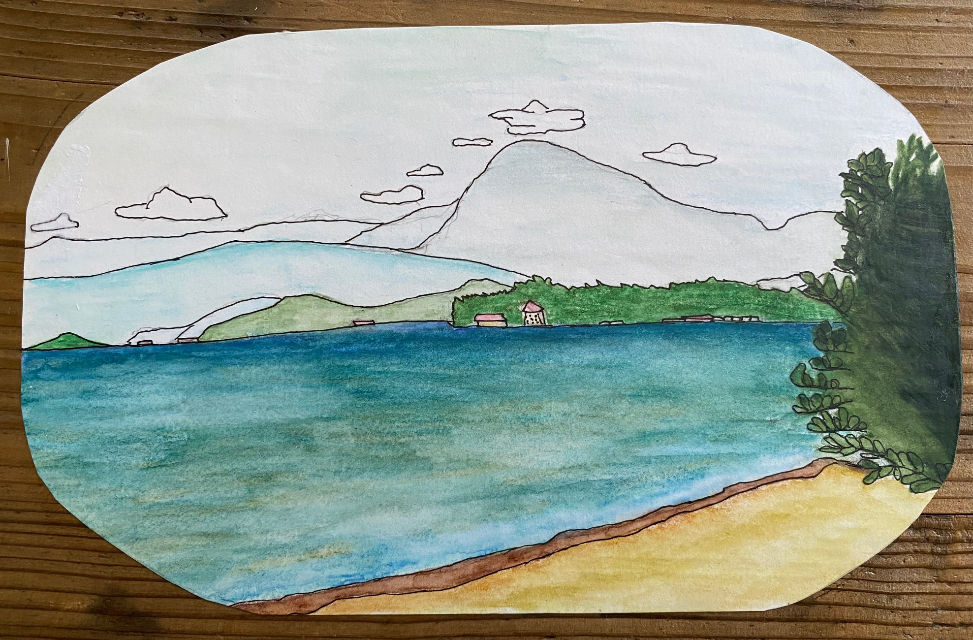MY CHANGING REPERTOIRE OF MOTION
- Rebecca Otowa
- Mar 8, 2022
- 5 min read

(The picture is an illustration from my children’s book My Awesome Japan Adventure (Tuttle 2013), showing women in kimono sitting in the seiza posture to play a traditional New Year card game.)
When I was a young wife, I overheard my mother-in-law in conversation with a relative. Both in their 60s, they were discussing what movements they could still manage in daily life. “Can you still put your pants on standing up?” “Yes, but I don’t think I’ll be able to for much longer.” I thought it was funny. Now that I am in my 60s, I think about the repertoire of physical movement that used to be available to me, compared with what I have now. Yes, I can still put my pants on standing up. It’s a little more complicated than before, since I can no longer lift my feet as high as I used to, but I can still do it, thankfully, since when I go to the public bath, there are few chairs available in the changing room for sitting down to put on one’s pants.
Last night I had a dream that has visited me often of late. I dreamt that I was comfortably sitting seiza (the “correct seating form” of Japan, in which one kneels with one’s legs tucked under, basically sitting on the feet). I can no longer do this in real life; about 15 years ago a doctor informed me that women over 50 should not sit seiza because it was too hard on the knees. I used to do it quite handily, which is necessary if you are studying the tea ceremony, as I did for many years. But when I hit 50, I suddenly developed problems in my knees, occasioning the doctor’s order – no more seiza. Of course, in line with the popular maxim, “Use it or lose it”, I almost immediately felt the flexibility in the knees decreasing, and I lost the ability to sit in this posture. Since then, if I am sitting on the floor (as often happens in traditional situations in Japan), I have to sit with my legs stretched out straight, with my feet and soles in full view, which is considered rude. I hate being so inflexible, and that probably explains why in dreams I often find myself sitting seiza and feeling quite comfortable. Last night I was so disappointed to wake up and find it had been a dream – again.
Many of my female Japanese friends also have problems with their knees and can’t sit seiza for more than a few minutes at most. (Men have always had the option of agura or crossed legs when sitting on the floor, but this was not possible for women traditionally, and even now women will go to great lengths to avoid this posture.) Our repertoire of movement has been circumscribed by the condition of our bodies.
Other movements are getting more difficult. I can’t really run, just a lurching trot that reminds me of longago days in the park with my Dad when a child – I thought, “Why can’t he run faster than that?”. It also feels more dangerous to climb a ladder or even perch on a chair to hang a picture. I don’t like being up high, especially if there is nothing to hang on to. Strangely, I have actually gained in repertoire when it comes to bending over. I can quite comfortably touch the ground between my feet, and can spend upward of an hour bent over from the waist with straight legs, weeding or gardening; this particular move was not available to me before I turned 50.
My hands and arms take up the slack for many lost movements, and I am always looking around for handholds. Japanese people don’t wear shoes in the house, that is well known; but this sentence fails to describe what is actually involved, especially in a traditional house – floor level is considerably higher than ground level, sometimes as much as 50 centimeters (18 or 20 inches). The two levels of a house, referred to as kami (above, floor level) and shimo (below, ground level), are very strictly separated, and shoes emphatically belong to “below”. In my daily life I find myself quite often stepping down from floor level and putting on footwear, usually scuffs, to move around outside. This movement, stepping down and twisting around to slide my feet into the scuffs, necessitates keeping a firm hold on the doorframe with one hand. Japanese people can do this without thinking – in fact they have trained themselves to step up to floor level and simultaneously arrange their shoes so that it will be easy to slide into them again when leaving. It also explains the relative scarcity here of tie shoes (or simply ignoring the ties on sports shoes etc.), fooling with shoestrings being an ungainly extra move that spoils the polite moment of entering a house (called agaru, going up) as a guest, or leaving it again after a visit. If the agari-to (stepping-up place) in a traditional house is too high for me, I often have to arrange my footwear and then just crawl into the house on hands and knees, coming to a standing position afterwards.
However, things have changed in Japan with both the ageing of the population and differing customs among younger people. This change is evident particularly in formal restaurants, which used to have knee-high tables with flat cushions on tatami mats as seating, but now have almost universally changed, either to ordinary tables and chairs, or a hollowed-out space below the table for feet to slip into, making seiza and agura unnecessary. Toilets, too, have changed drastically. In most establishments you can now count on being able to use a “Western style” toilet, instead of a glorified hole in the floor, which was the only type available a half century ago.
I have to incorporate the changes in my body into ordinary life. I have to make friends with my ageing body. It wants to go slower, and it wants to be comfortable. It has lots of aches and pains, especially carpal tunnel syndrome (from so much handwork), stiff shoulders, and aching legs. My body demands much more of my time and thought these days.
Sounds like there is no upside. But there is. I now have a larger viewpoint and more time to think carefully about things, to see all points of view, to cultivate compassion for all the entities that share this material world with all its challenges, pleasures and pains. Thoughts about what might be coming next, reflections on the life gone by, love for all the little details I didn’t have time to notice before. Flexibility in mind and heart, compensating for lack of flexibility in the body, in other words. This very blog is one of the good things to come out of my latter years. I’m grateful there is so much to think and write about.



Being "grounded" by Covid has enabled me to return to martial arts training, after a 12 year hiatus. My ego still wants to move as I did in my late 30s, by the body has other ideas.
Flexibility of mind and heart…. That is what we need. And glad to know I don't need to feel horribly American for being unable to sit seiza any more. But I do sit agura. Then I am agressively American, though I will drape a scarf over my lap as I have seen Japanese women do. But to cultivate the flexibility of mind and heart: that is a worthy goal.